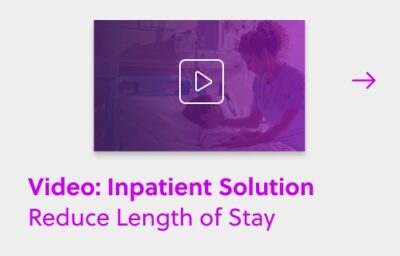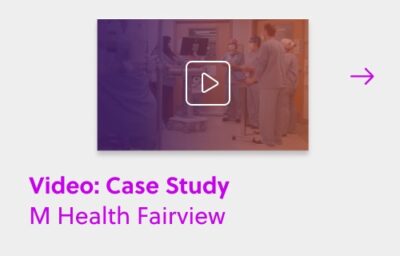By David Atashroo, MD
Operating rooms are the economic backbone of most hospitals, representing a significant portion of total revenue, and often operating at a higher profit margin than other departments. And, even more importantly, they’re responsible for providing critical, life saving care for patients. However, many hospitals struggle to efficiently utilize their operating rooms, which limits the number of patients receiving care and impacts hospitals’ financial growth strategy.
In this blog, we will explore three challenges that limit OR utilization, and share how the right application of machine learning algorithms can solve them.
Unused Block Time Goes Unfilled
One of the most common causes of OR white space is unutilized block time. Surgeons must proactively release the allocated block time they know they will not be using or it will show as unavailable. Even if the hospital has an auto-release policy, it usually kicks in just a few days before the block that is being released. By the time the auto-release occurs, it’s too late to fill the time, resulting in the time going unused. If there’s no mechanism in place for identifying time that is likely to go unused, and no intervention to encourage the surgeon to release it early, this problem will persist.
This is where machine learning can help. Machine learning algorithms can analyze historical EHR data to predict, up to one month in advance, which blocks or partial blocks are likely to go unused. When there’s high confidence in these predictions, emails can be automatically sent to the surgeon, encouraging them to release the time early, making it available for others. The simple act of nudging a surgeon to release time that we know they are not going to use anyway makes a big impact on freeing up OR time earlier so it is more likely to get filled. This proactive approach frees up more time that would otherwise go to waste, giving other surgeons the opportunity to fill these time slots with high-value cases.
Manual, Inefficient Scheduling Processes
Even when operating room time is available, hospitals often struggle to schedule cases efficiently due to a lack of visibility into open time slots. Manual scheduling processes require a lot of back-and-forth between schedulers and the OR, which makes it challenging for schedulers to find available time slots outside of their surgeon’s assigned block time. The lack of visibility into open time makes it difficult to schedule cases and creates more unused time.
Advanced machine learning algorithms, like the ones that power Qventus’ Perioperative Solution, can help solve this problem by simplifying the scheduling process and serving up open time slots that meet the length and equipment requirements of a specific case. There are two ways in which we do this.
The first is Available Time Outreach. Available Time Outreach works by automatically offering available time directly to surgeons who are predicted to be the best fit based on practice patterns and past performance. The algorithm can be modified to weigh institutional priorities, such as growing targeted service lines or improving robotic utilization. This automated, data-driven approach enables leaders to proactively fill open time with high priority cases.
The second is TimeFinder. TimeFinder is an intuitive reservation interface used to view and request OR time in real time. Machine learning algorithms filter and prioritize time slots that are predicted to be the best fit based on the surgeon’s past case time performance and other
factors, which makes it simple and efficient for users to find time and schedule cases.
By improving scheduling efficiency and algorithmically suggesting best-fit times, schedulers are able to book cases more easily and find time they otherwise may not have found.
Inaccurate Case Length Estimations
Another issue is the inaccurate estimation of case durations. When case lengths are not accurately predicted, it can lead to wasted operating room time when cases end early, or it can result in delays when cases run longer than anticipated. These inconsistencies can disrupt the entire surgical schedule, creating a snowball effect that causes even more unused time.
Machine learning models are a great solution for this, because they can quickly analyze large, complex datasets that humans aren’t able to. Qventus has developed a Case Length Adjustment Tool (CLAT) that analyzes many different data points to predict case length more accurately. These data points include:
- The type of procedure
- The hospital and specific OR in which the case is being performed
- The clinician(s) involved
- Seasonality
- Time of day
- Trends in a surgeon’s time performing the same operation.
The impact that more accurate case length estimation can have is powerful. At University of Arkansas for Medical Sciences, CLAT improved case length estimation by 30%, resulting in a 40 hours per year reduction in wasted OR time.
You can learn more about the Case Length Adjustment Tool in this blog.
Conclusion
Operating room utilization is a critical aspect of a hospital’s operations, impacting both patient care and the institution’s financial health. Advanced machine learning algorithms can help address common challenges that limit OR utilization, making it possible to predict unused block time, improve scheduling efficiency, and enhance case length estimation accuracy. By implementing OR optimization software built on these models, you can maximize the value of operating rooms and improve the overall efficiency of your health system. Through the power of machine learning, Qventus is helping healthcare facilities unlock the full potential of their operating rooms.


